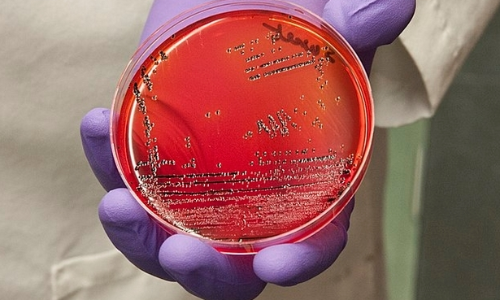Proper food handling is essential to ensure the safety of the food we eat. With that in mind, it’s important for food handlers to follow proper food handling procedures to prevent the growth of harmful bacteria and cross-contamination.
Cleanliness
Maintaining a clean environment is one of the most important aspects of safe food handling. This includes washing hands regularly, keeping all surfaces and utensils clean, and properly storing food to prevent contamination.
Temperature Control
Keeping food at the correct temperature is crucial in preventing the growth of harmful bacteria. Hot foods should be kept at a temperature of 140 degrees Fahrenheit or higher, and cold foods should be stored at 40 degrees Fahrenheit or lower.
Cross-Contamination Prevention
Cross-contamination is when bacteria from one food item is transferred to another. This can be prevented by using separate cutting boards for raw meats and vegetables, storing raw meats below cooked foods in the refrigerator, and properly cleaning all utensils and surfaces after they come into contact with raw meats.
Proper Cooking
Cooking food to the correct temperature is essential in killing any harmful bacteria that may be present. A food thermometer should be used to ensure that meats, poultry, and fish are cooked to the proper temperature.
Serving and Storing
Once food has been cooked, it should be served immediately or stored in airtight containers in the refrigerator. Leftovers should be reheated to a temperature of 165 degrees Fahrenheit before being consumed.
Personal Hygiene
Food handlers should practice good personal hygiene such as washing hands regularly, taking regular breaks to avoid contamination and avoiding touching face, hair or clothing while working with food. They should also stay home if they are sick or have any symptoms of food-borne illness. By following these guidelines, food handlers can ensure that the food they serve is safe for consumption.
Interesting Facts:
One interesting fact about food handling is that a person’s hand can carry more germs than a toilet seat. Therefore, it’s extremely important to wash hands thoroughly before handling food. Hands should be washed for at least 20 seconds with warm water and soap, and dried with a clean towel or air dryer. (see below)
Another interesting fact is that color coding system is often used in food handling to prevent cross-contamination. This involves using different color cutting boards, utensils, and other tools for different types of food. For example, red cutting boards are typically used for raw meats, yellow for poultry, green for vegetables and blue for seafood. This helps to prevent bacteria from raw meats from contaminating other foods.
Additionally, the use of UV-C light technology is becoming increasingly popular in food handling industry. UV-C light has been shown to effectively kill bacteria, viruses and other pathogens on surfaces and in the air. This technology is being used in food processing plants, grocery stores, and restaurants to help keep environments clean and reduce the risk of food-borne illness.
Lastly, some foods can be naturally antimicrobial and can be used as preservatives. For example, Oregano, thyme, cinnamon, and cloves contain natural compounds that can inhibit the growth of bacteria, making them effective natural preservatives.
The Toilet Seat Addendum:
It is a common belief that a person’s hand carries more germs than a toilet seat, but this statement is not entirely accurate. Hands are known to be carriers of germs and bacteria, as they come in contact with a variety of surfaces throughout the day. However, the level of germs and bacteria on hands can vary greatly depending on the individual and their personal hygiene habits.
On the other hand, the toilet seat is not as dirty as it is believed to be, as germs tend to die quickly on hard, non-porous surfaces like toilet seats. The most common germs found in the toilet are E. coli and other fecal coliforms. These organisms can be found on the surface of the toilet seat, but they can’t survive for long periods of time.
Books
- “Food Safety: A Guide for All Food Handlers” by Emily Day. This book provides an overview of food safety principles and guidelines for food handlers, including information on temperature control, cross-contamination prevention, and personal hygiene.
- “Food Safety: The Science of Keeping Food Safe” by Elizabeth Andress and Judy Harrison. This book provides an in-depth look at food safety, including the causes and prevention of food-borne illness, safe food handling practices, and the role of government agencies in ensuring food safety.
- “Food Safety Modernization Act: The New Era of Food Safety” by United States Government Accountability Office. This book provides an overview of the Food Safety Modernization Act (FSMA) and its impact on the food industry, including information on the regulations, compliance, and enforcement of the FSMA.
- “Food Safety: An Introduction” by Barbara Almanza, Louise G. Estes, Mary Ellen F. Phillips. This book provides an introduction to the principles and practices of food safety, including information on food-borne illness, food handling, sanitation, and regulations.
- “Safe Food: The Politics of Food Safety” by Marion Nestle. This book provides a comprehensive look at the politics and science of food safety, including the history of food safety regulations, the role of industry and government in ensuring food safety, and the impact of food safety on public health.
- “The Food Safety Information Handbook” by By Cynthia A. Roberts · 2001, Outbreaks of Mad Cow Disease, reports of potentially harmful genetically engineered corn and irradiated vegetables are fueling consumers’ demands for clear, concise information about the safety and quality of the food supply.

